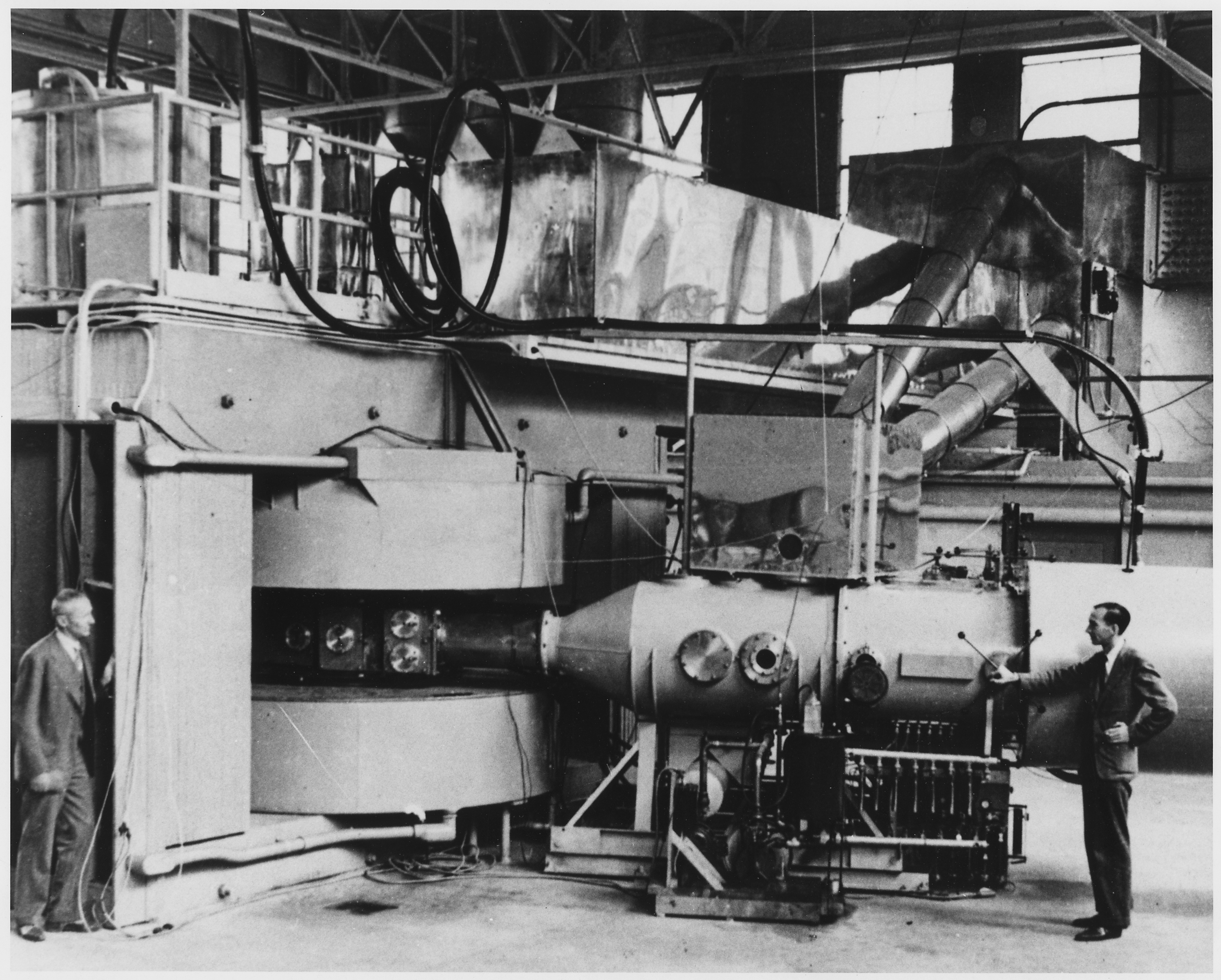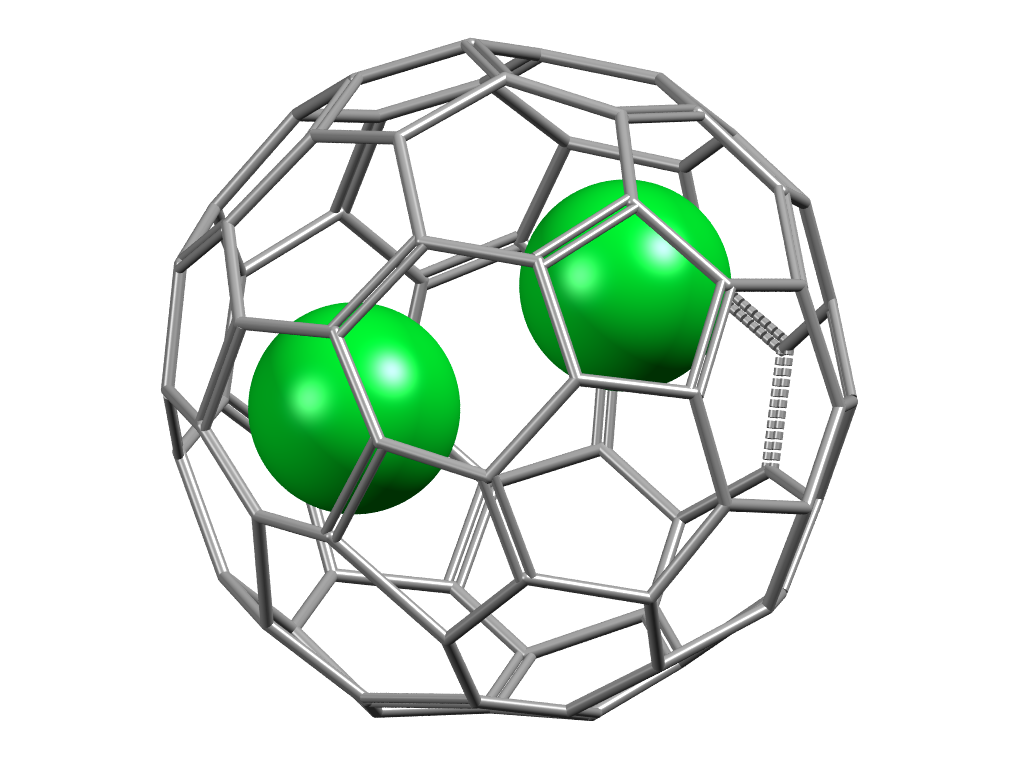Lawrencium
Lawrencium:

The first type of particle accelerator, the cyclotron, invented by Ernest Lawrence, was used to synthesize many new elements.
Facts about Lawrencium:
- Lawrencium: Lawrencium is a synthetic element, and is expected to have similar properties to Lutetium which sits just above it in the periodic table.
- Fun fact about Lawrencium: Lawrencium is expected to be a very heavy metal, with a melting point around 1900 K – or over 2000 deg.C!
- Chemical symbol: Lr
- Atomic number: 103
A crystal structure celebrating Lawrencium:

In part of this crystal structure, a special molecular cage made of carbon (grey sticks) known as a fullerene is used to trap atoms of lutetium (green balls).
Facts about this structure:
- Formula: C76 6-,2(C6 H6),2(Lu 3+),C36 H44 N4 Ni
- Structure name: di-lutetium (Td)-C76fullerene-hexaide (2,3,7,8,12,13,17,18-octaethylporphyrinato)-nickel(ii) benzene solvate
- Fun fact about the structure: Fullerenes have been used to isolate many different elements. Perhaps someday scientists will be able to trap Lawrencium in this way.
- CSD refcode: VILHEG ( What’s this?)
- Associated publication: Wangqiang Shen, Lipiao Bao, Shuaifeng Hu, Le Yang, Peng Jin, Yunpeng Xie, Takeshi Akasaka, Xing Lu, Chemical Science, 2019, 10, 829. DOI: 10.1039/C8SC03886D
More about Lawrencium:
Lawrencium is named for physicist Ernest O. Lawrence who invented the cyclotron, which is a type of particle accelerator. Modern-day particle accelerators are used to create new elements, such as Lawrencium, by smashing smaller atoms and particles together. Truly, this science has come full-circle.
Learn More About the International Year of the Periodic Table (IYPT) in Crystals Project:
This project (#IYPTCrystals) is part of the International Year of the Periodic Table celebration (#IYPT2019), read more about the project here.
You can follow us on social media; search for #IYPTCrystals or follow The CCDC on X @ccdc_cambridge on Facebook ccdc.cambridge, on Instagram ccdc_cambridge or on YouTube CCDCCambridge.
Understand some of the terms and concepts used with our Frequently Asked Questions page here.
A 3D visualization showing Lawrencium in real crystal structures: